Ready to get a selling / advertising / branding website?
- Predictable
- Systemic
- Stable
Sales
via the Internet
.webp)
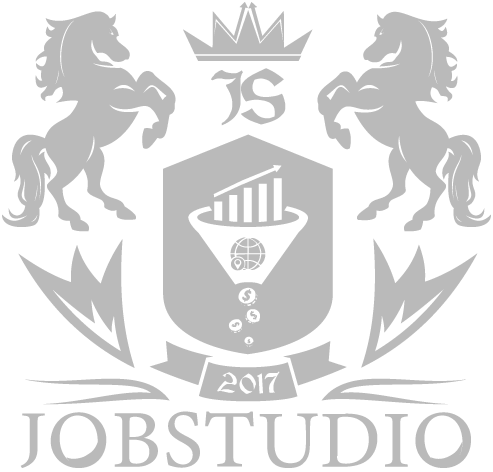
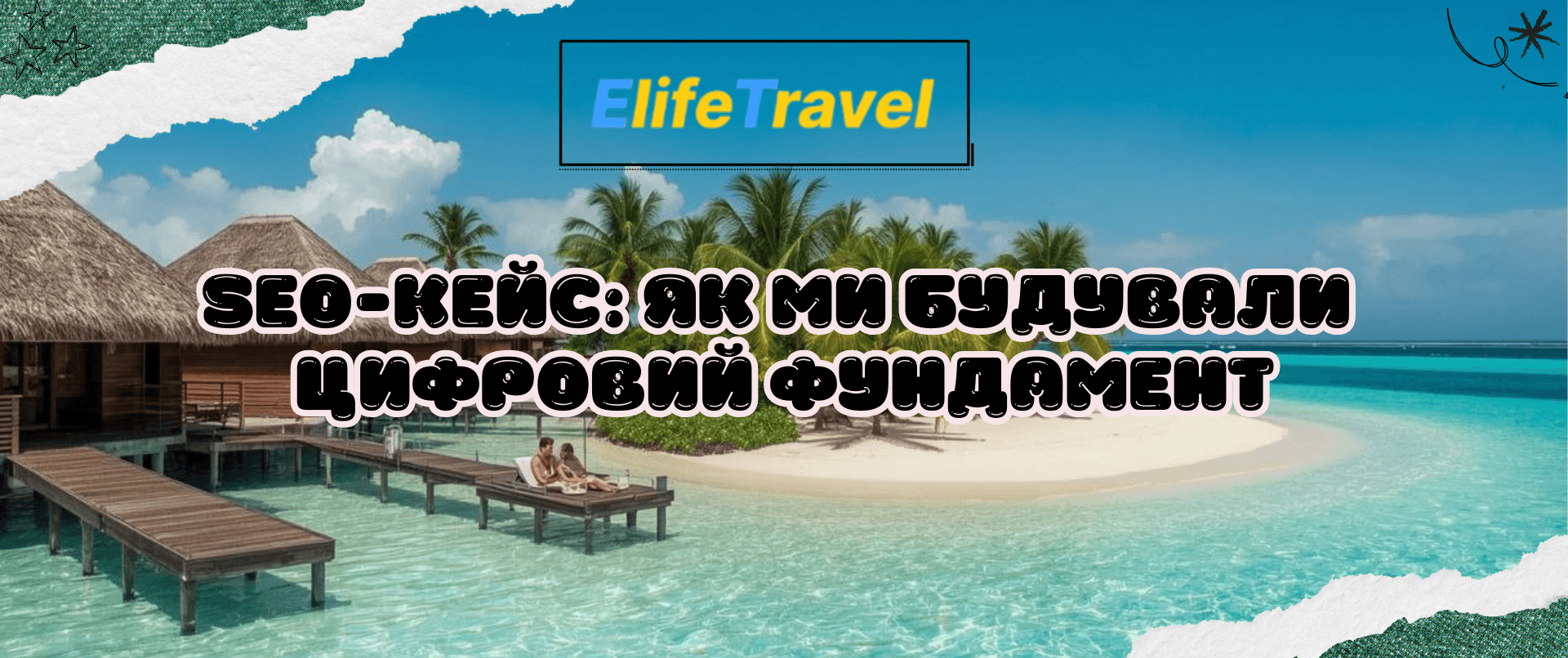
We specialize in large-scale projects, so we understand the value of a solid foundation. With our expertise in working with financial aggregators and exchanges, we approach the preparatory stage of SEO with the utmost care.
The key challenge in this project was the need to develop the site’s architecture in the absence of a collected semantic core and analysis of user requests. Despite this, our team developed a preliminary layout of the structure.


This layout became the basis for further iterative work, allowed us to systematize the approach to future SEO optimization, and served as an effective tool for solving related project tasks. This ensured quick adaptation to the specifics of the niche and laid the foundation for further development.
Table of Contents
Elife Travel is not just a tour aggregator. It is a virtual “portal” that collects offers from the world’s leading tour operators, opening the way for users to travel from snow-capped peaks to tropical beaches. The project has Ukrainian roots, but its ambitions are global.
Project team:
The team decided to make a bold leap: to switch from the local Israeli market (where the previous version was already running on a well-known CMS) to the powerful Laravel framework for a global launch. Our task: to prepare this “machine” for global SEO promotion before its official launch in the search engine index.
When we took on Elife Travel, the future “tourist Olympus” was only 30-40% complete. It’s like putting together a puzzle with only a third of the pieces.
The main challenges were as follows:
We were proactive: we created a flexible structure layout that became the starting point for the entire project. This approach allowed us not only to dive deeply into a new niche but also to effectively develop the project further, turning the initial uncertainty into our strategic advantage.
To understand the rules of the game, we looked at the champion. We carefully analyzed the website of the market leader, TourRadar. As part of the competitive analysis, we conducted an in-depth study of its structure. It was used as a reference for analyzing the best market practices. It is important to note that only those architectural and content elements were implemented that, after a critical evaluation, met the strategic goals of our project.
The client understood that a self-written CMS requires strict compliance with SEO criteria both on the backend and frontend. Our mission was to ensure the best results and top positions after launch. This meant: indexing, speed, mobile adaptation, proper content structure, minimizing future costs, and setting up analytics.
To transform the Elife Travel “skeleton” into a full-fledged aggregator, we have developed a comprehensive plan:
We prepared more than 30 detailed technical specifications:
We were faced with a choice: to create one “universal” English version or to develop separate, targeted versions for the US, UK, Canada, and other key markets, and we chose the second option. As a result, we implemented a flexible hreflang structure, which became a reliable foundation for international promotion of the project without unnecessary costs at the start.
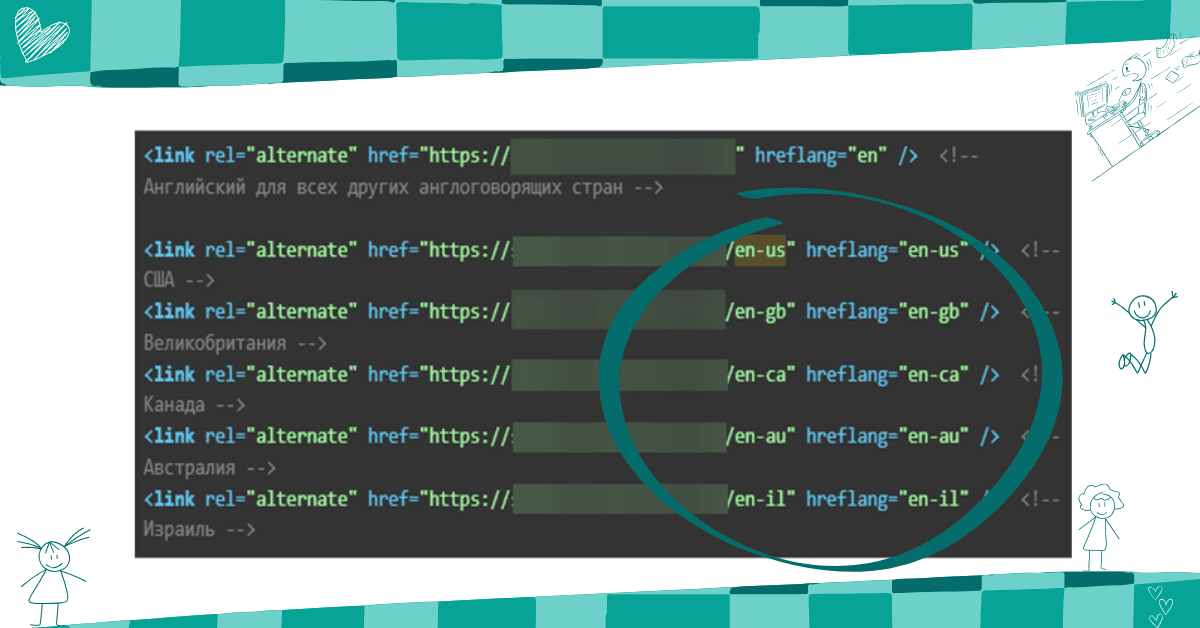

To do this, we have done a lot of work for the future “gluing” of the current and new domains: we analyzed more than
35,000 pages of the existing site and set up a personal “navigator” (301 redirect) to the corresponding page of the new site for each of them.
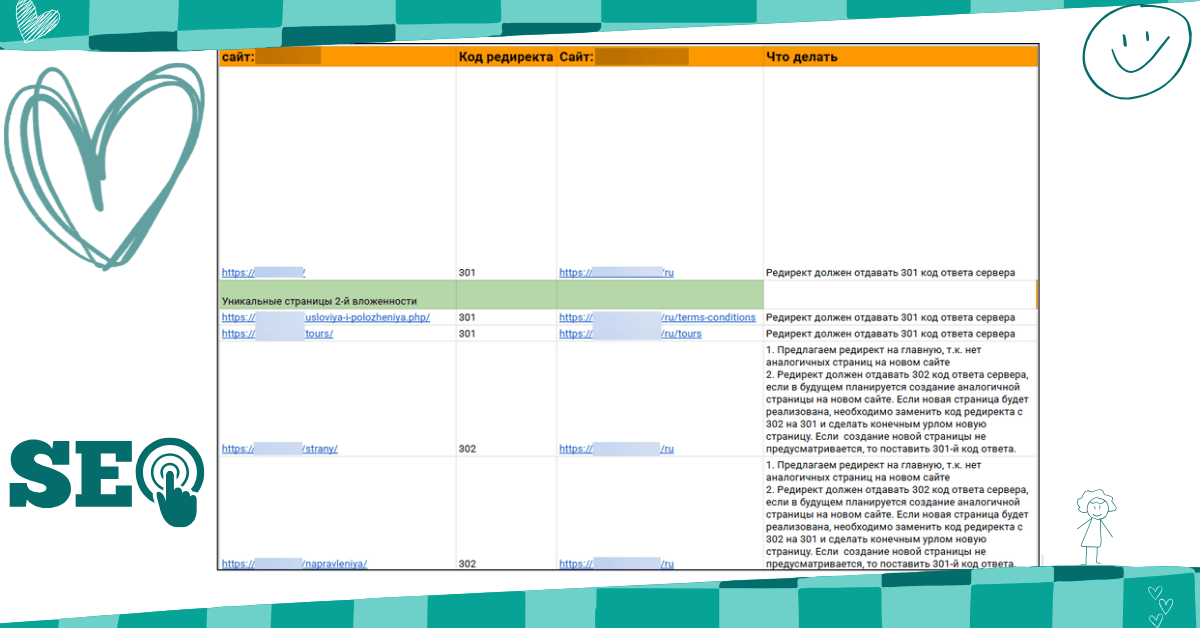

After the grouping was completed, the URL groups on the old site were matched with the URLs of the new site.
It was also important to transfer images and content correctly, which was done.
At the same time, we cleaned up the basic architecture: we set up a single version of the domain and eliminated all technical duplicates.
This comprehensive approach to redirects ensured that the migration to the new platform went smoothly for the business and with maximum benefit for its potential customers.
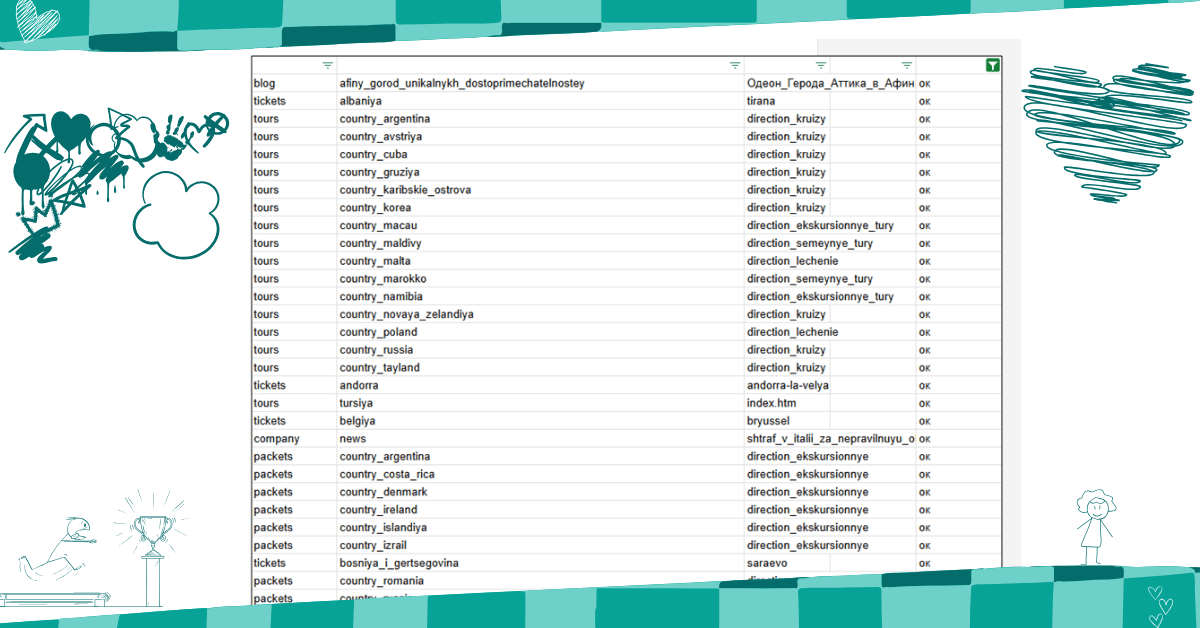

2. Preparation of smart meta tags: we developed templates for auto-generation of title and description;
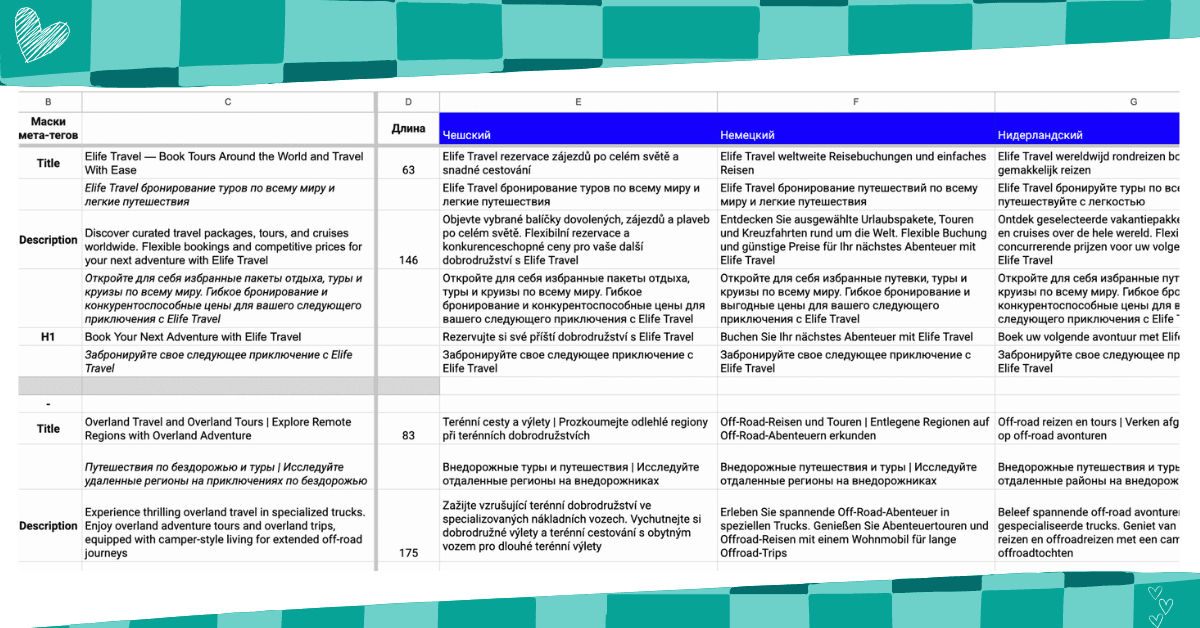

3. Preparation of the image optimization task: As part of the project, we conducted in-depth image optimization, focusing on alt and title attributes, which is an important component of effective SEO and user experience.
Why it matters:
There were also a lot of nuances with translations into other languages, and the main thing was to control the translation very carefully.
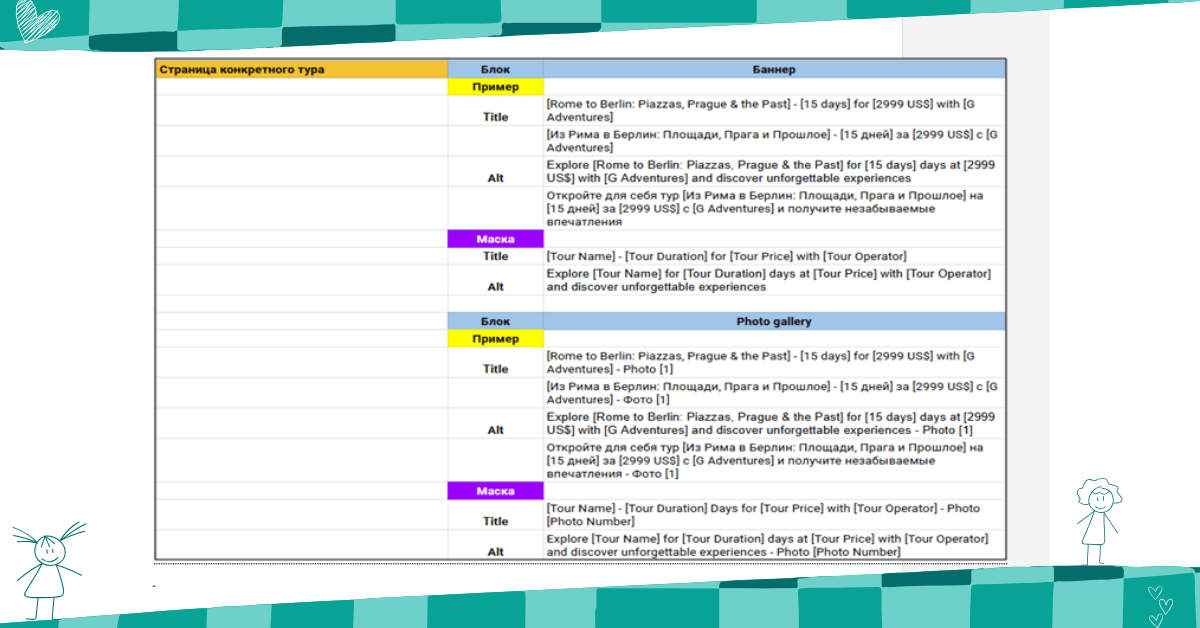

Strategic approach: We analyzed competitors to identify best practices and develop unique image “masks” (templates) for each type of page. This allowed us to ensure consistency and readability, solving the problem of chaotic optimization.
Technical recommendations: We provided detailed recommendations for optimizing image names, choosing the best formats (e.g. WebP for speed), and reducing image size and weight. This was critical for page loading speed and overall site performance. The main difficulty was balancing quality and size, but our suggestions for using modern formats and compression tools allowed us to achieve optimal results.
We took into account the most popular types of micro-markup, such as Organization, Breadcrumbs, FAQ, as well as special types that were suitable for the current niche, for example:
Recommendations on Open Graph and Twitter micro-markup were also provided.
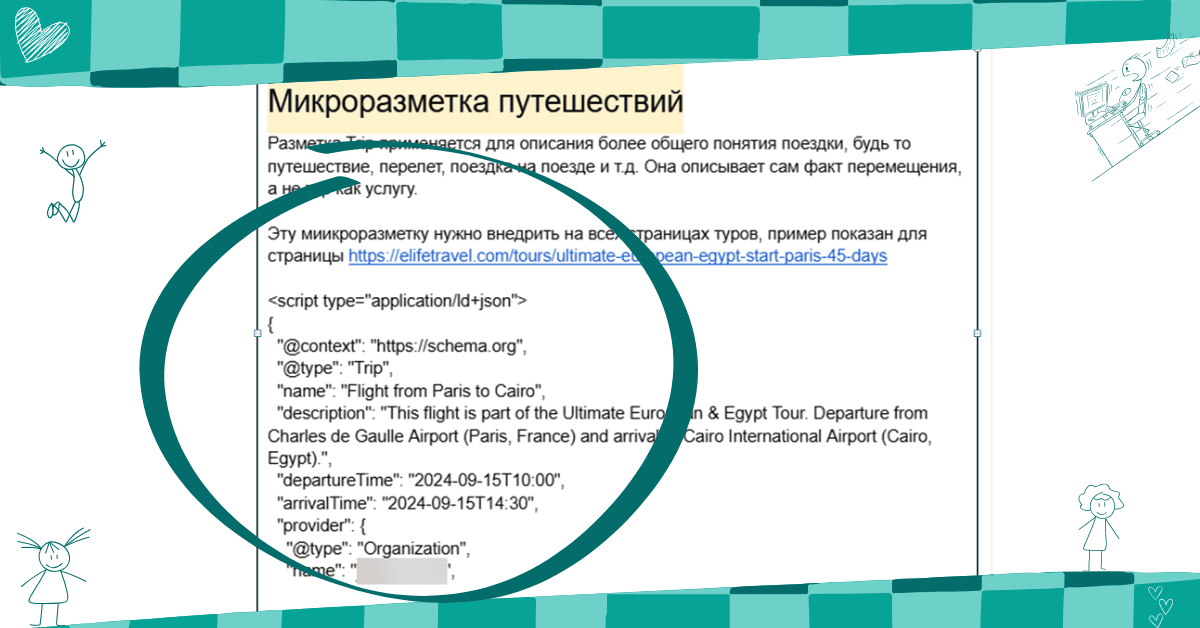

4. In the process of working on the project, the stage of forming the site structure turned out to be one of the most difficult, requiring maximum flexibility and innovation from the team.
Intensive teamwork and communication
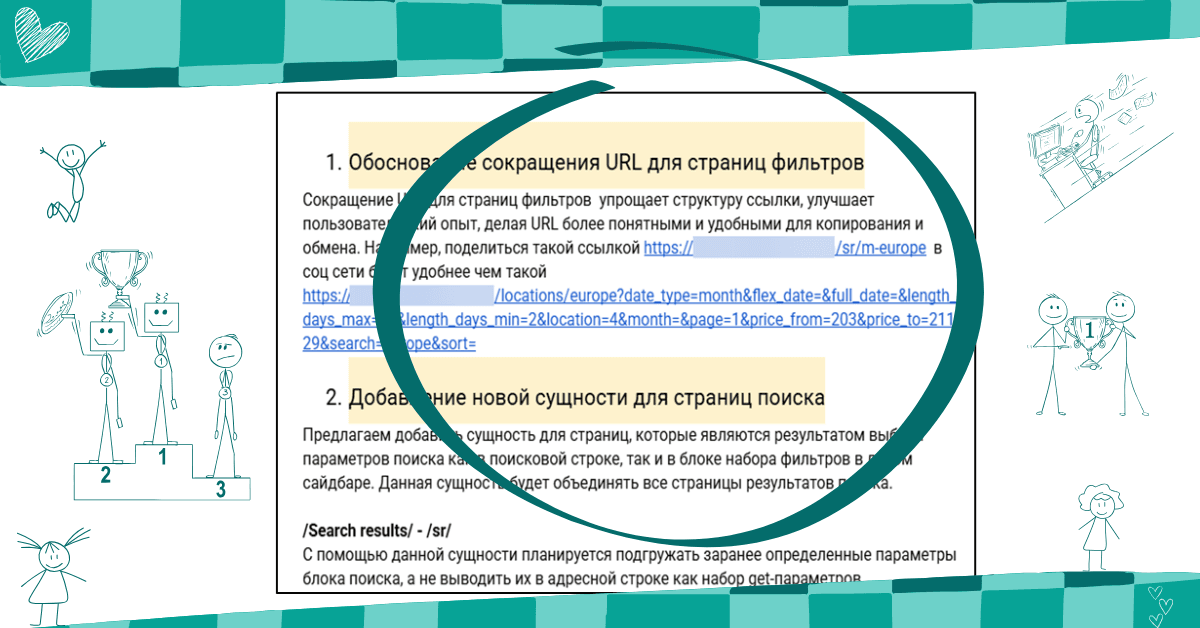

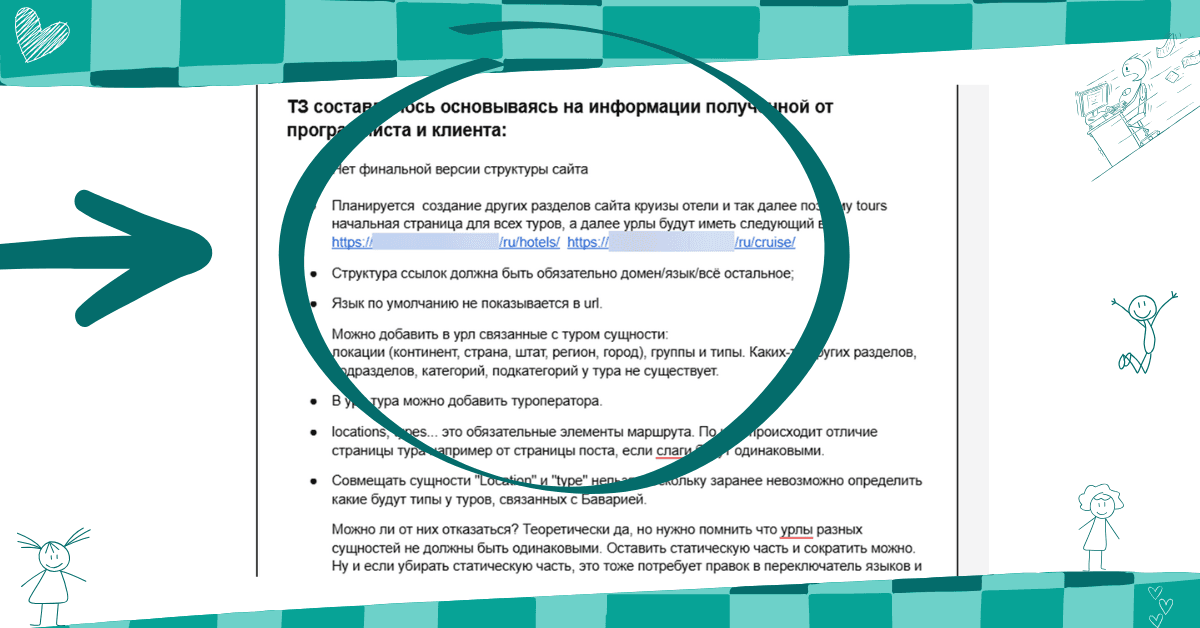

It was suggested to use entity shortening to reduce the overall length of the URL.


5. “traffic management console” – GTM + GA4: Google Tag Manager and Google Analytics were configured in detail 4;
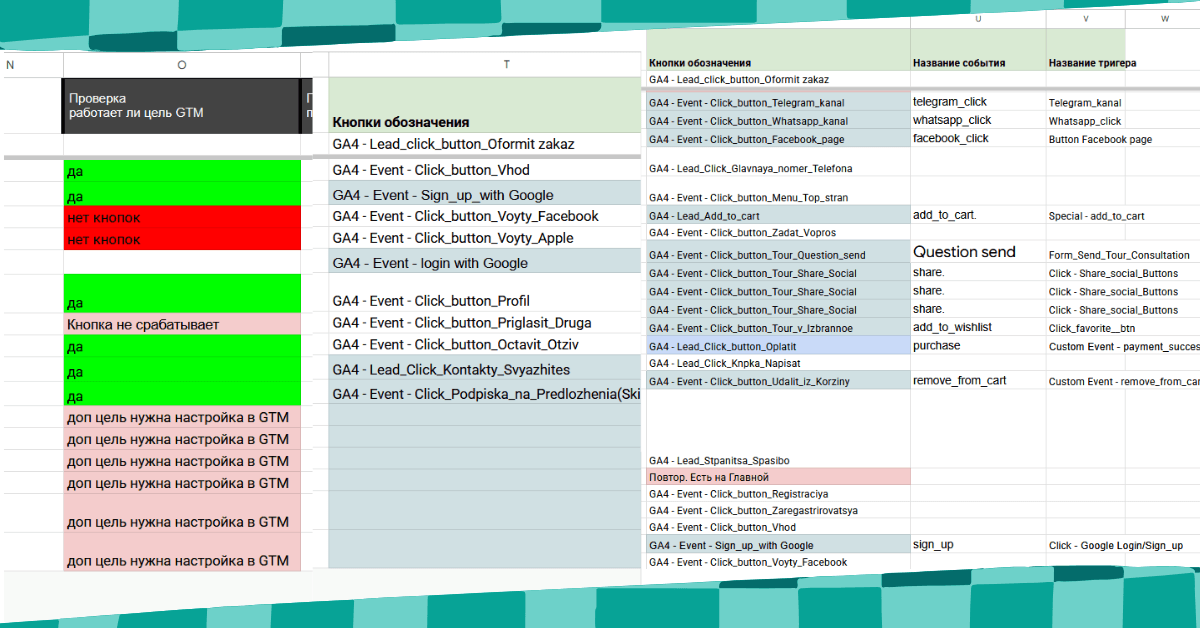

6. Setting up internal linking. We have drawn diagrams of current and future links on the site pages.


To effectively implement linking on a website, especially given the complex structure discussed above, it is crucial to have a clear visualization of the hierarchical scheme.
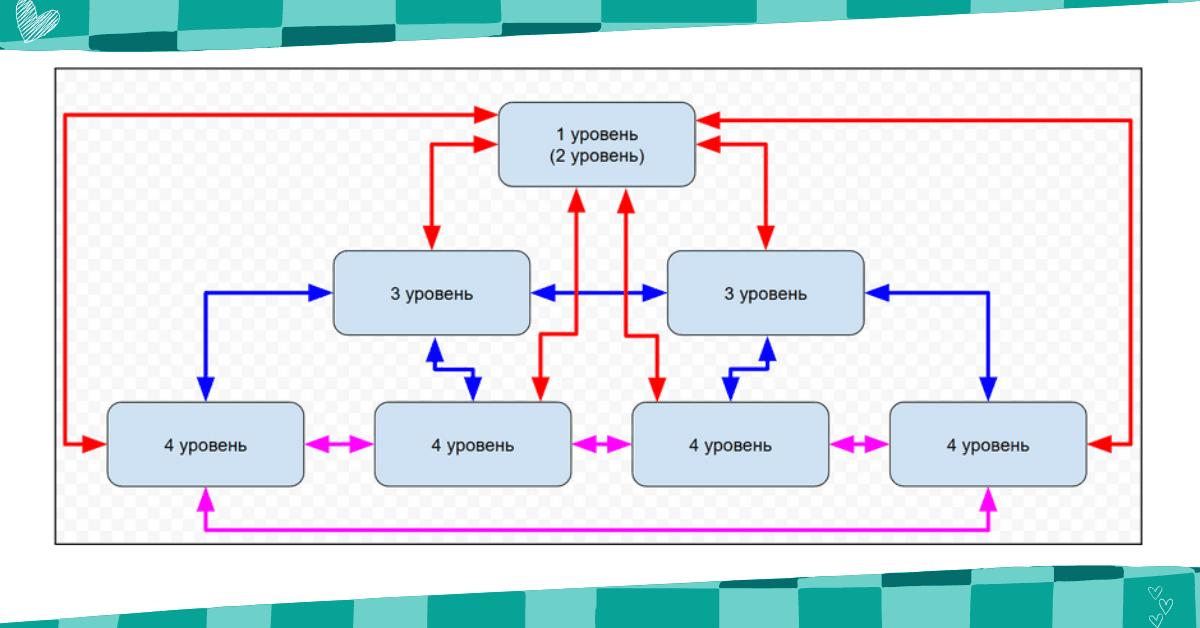

This linking scheme is chosen for SEO because it provides:
placeholder do not modify
placeholder do not modify
placeholder do not modify
placeholder do not modify
At the same time, we analyzed competitors and their linking blocks.


7. Implementation of canonical: recommendations for setting up canonical tags and correct pagination to optimize page indexing and prevent duplicate content.


Collected and clustered more than 79,000 key queries (including 156 manually verified for the main cluster) for European countries.
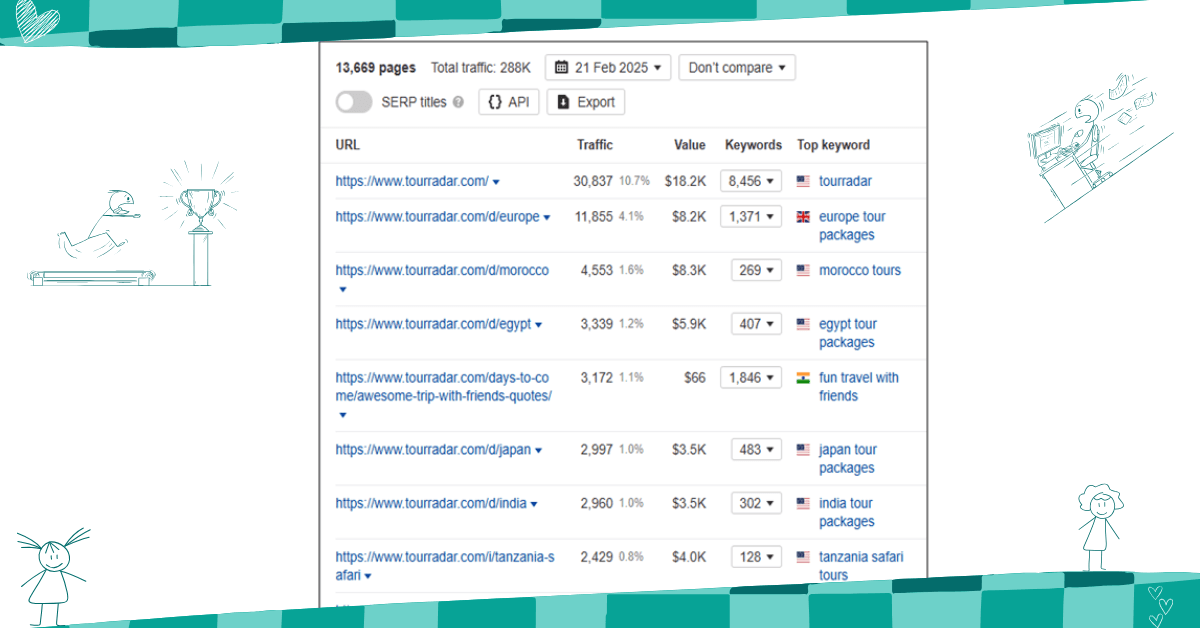

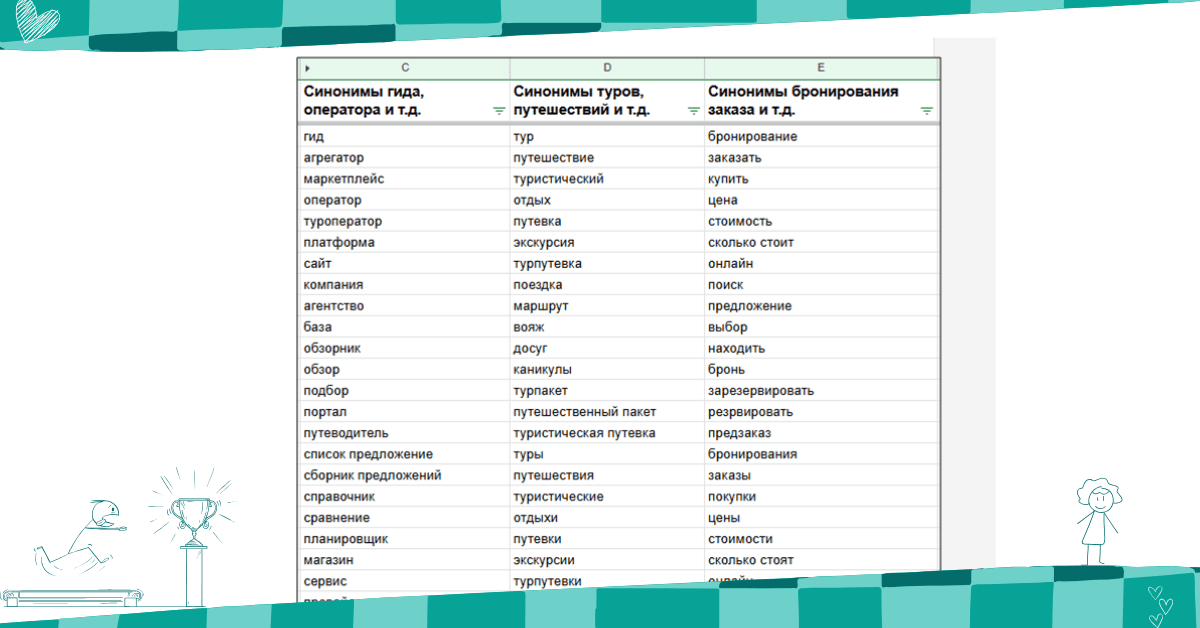

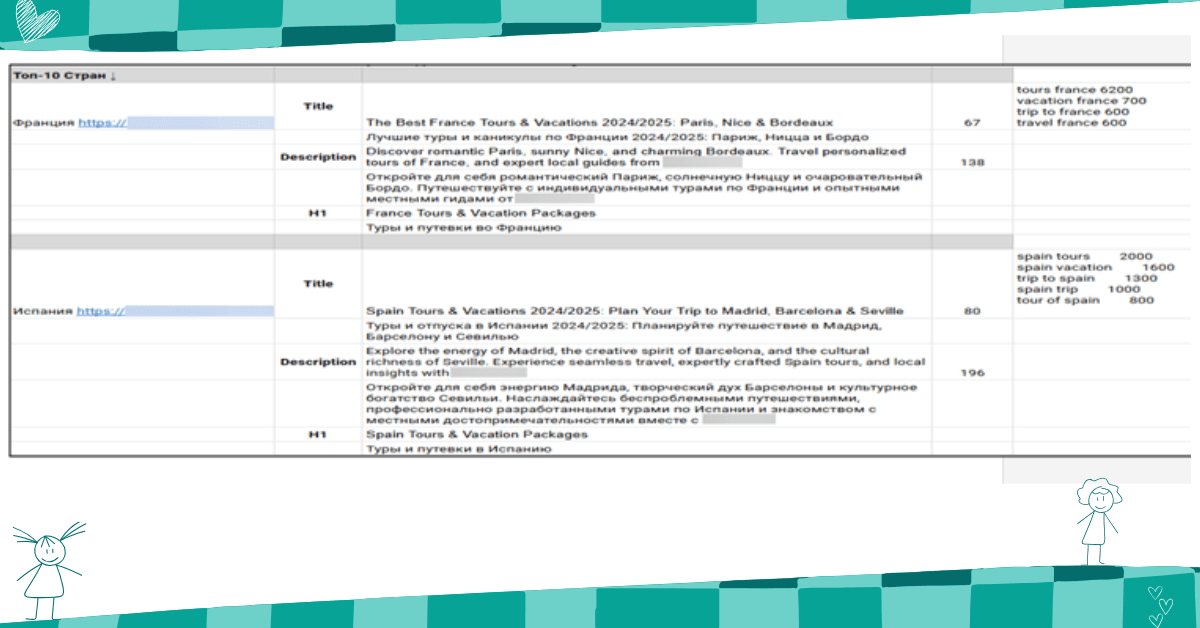

We developed content and meta-tag templates for top countries and cities.
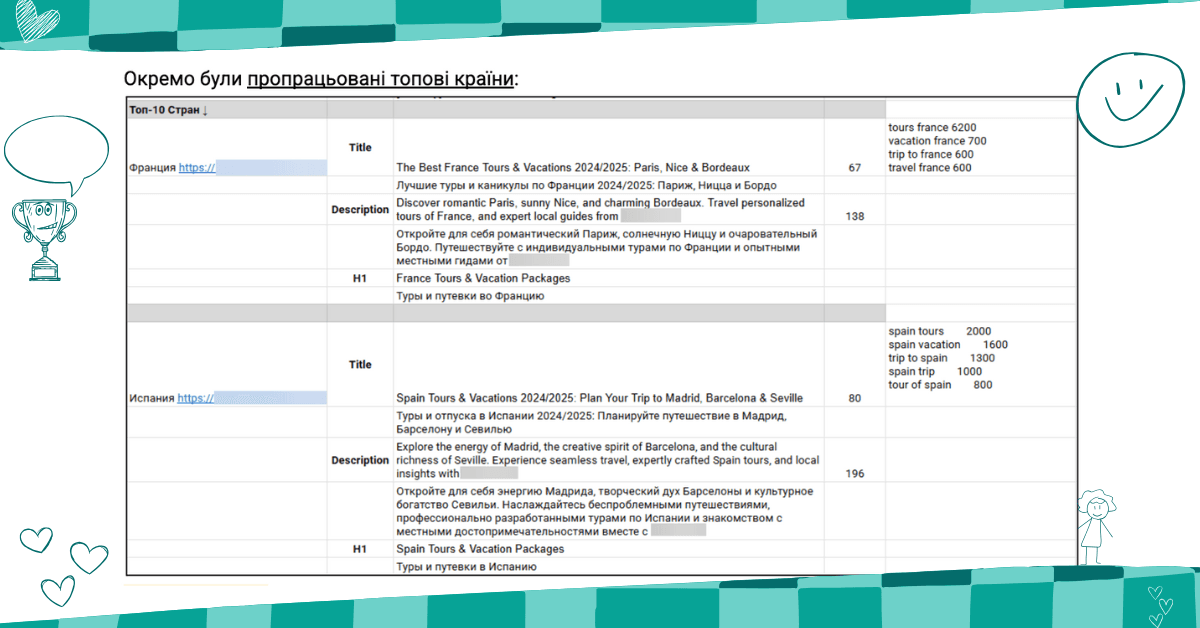

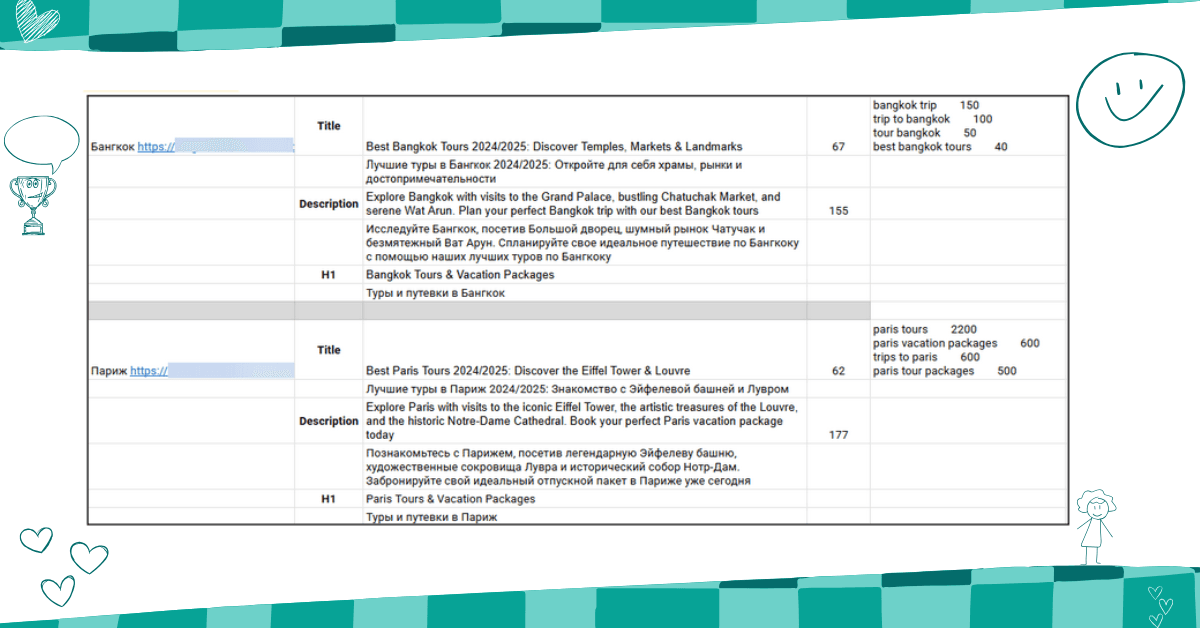

We tested the OpenAI API for text generation, but the client chose to manually write the main sections by an experienced content manager with partial generation of other pages using templates. This approach produced fairly high-quality and interesting texts of 3000-5000 characters.
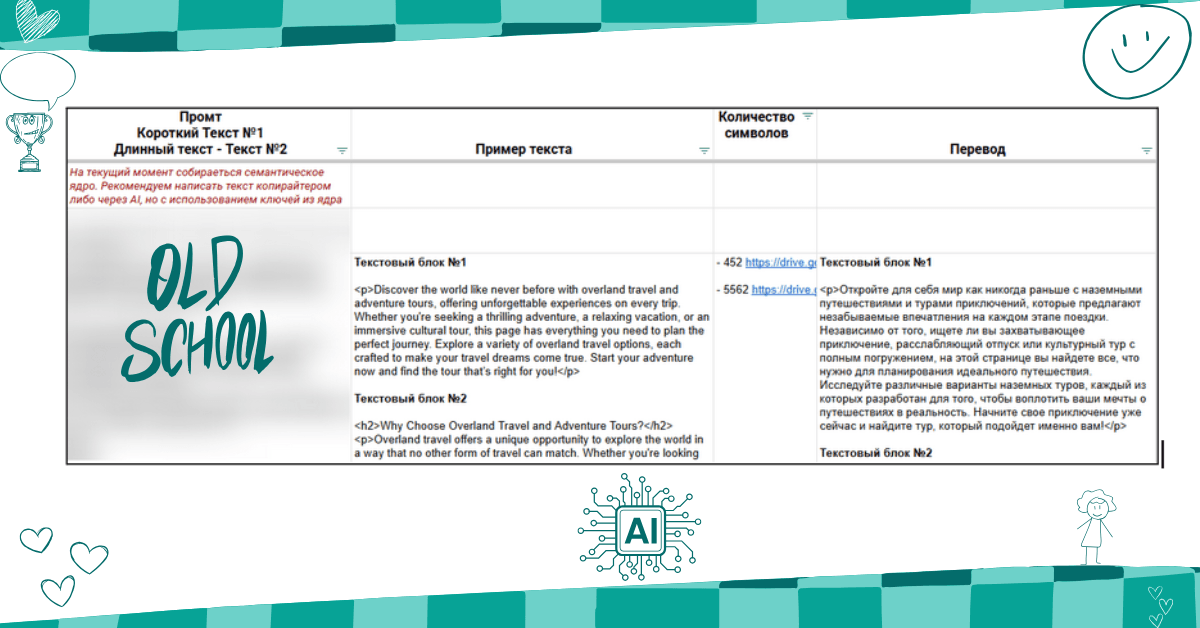

Continuous communication and implementation: constant interaction between the SEO team, the client, and the developer in Telegram, recording progress in a table.


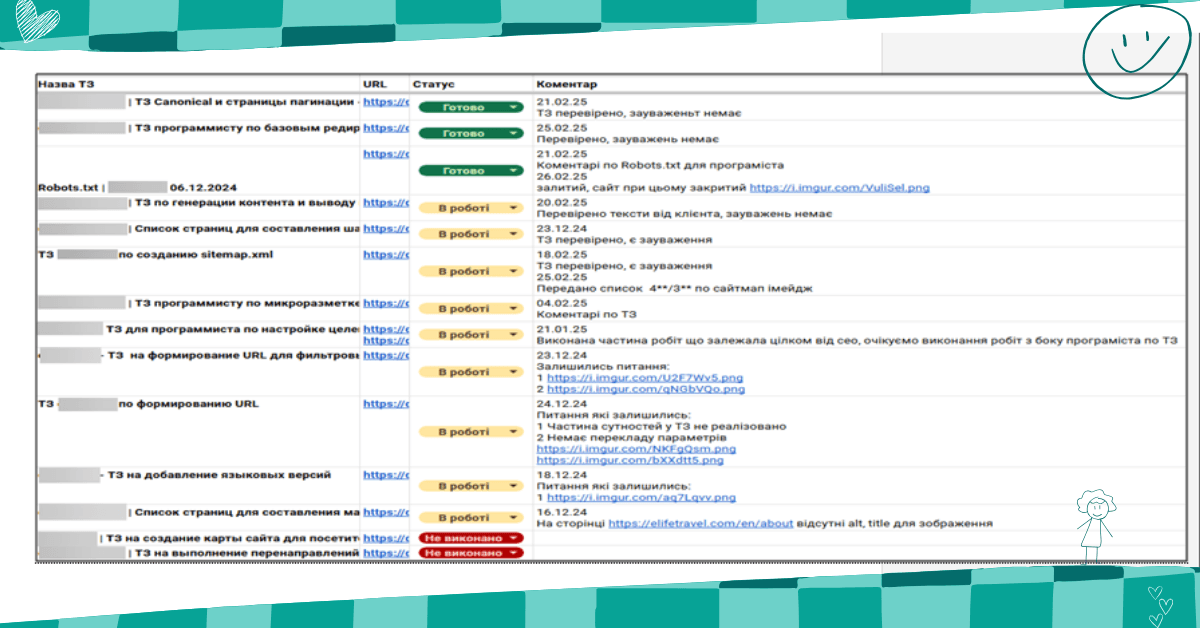

Solution: We quickly checked and made changes, identified the online translator that made the fewest mistakes and optimized keyword embedding for all 8 languages.
Solution: we proposed a new /sr/ (Search results) entity, replacing cumbersome URL parameters with shorter ones.
Solution: We implemented this through X-Robots-Tag, providing full control over indexing.
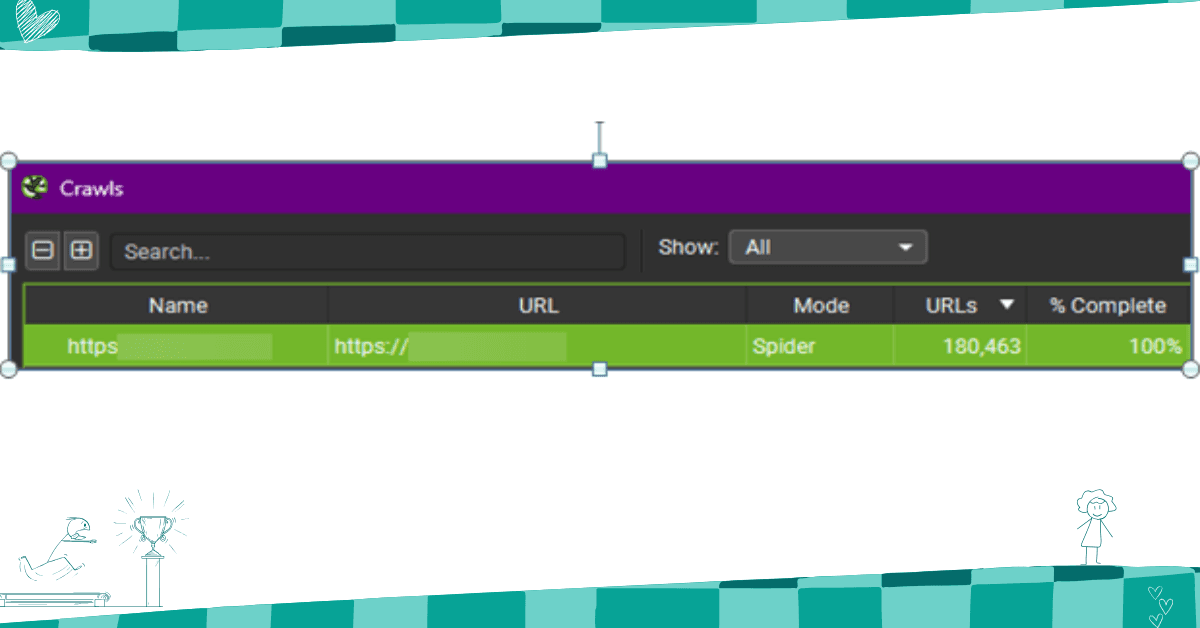

Each “battle” was won thanks to well-coordinated work and innovative solutions.
User journey testing: identifying and fixing conversion issues
We went through the entire user journey from choosing a voucher to booking and purchasing it to check the convenience and correctness of the checkout process. During the testing process, we found problems with the form submission, which could negatively affect the conversion rate. All the details were recorded and passed on to the client for further troubleshooting.
We completed our part of the work on the SEO TOR, divided the tasks of the goal map by performers: “SEO” and “Programmer/SEO”. This approach was necessary because some items required the addition of additional code on the website side for correct tracking and further customization of events in Google Tag Manager (GTM).
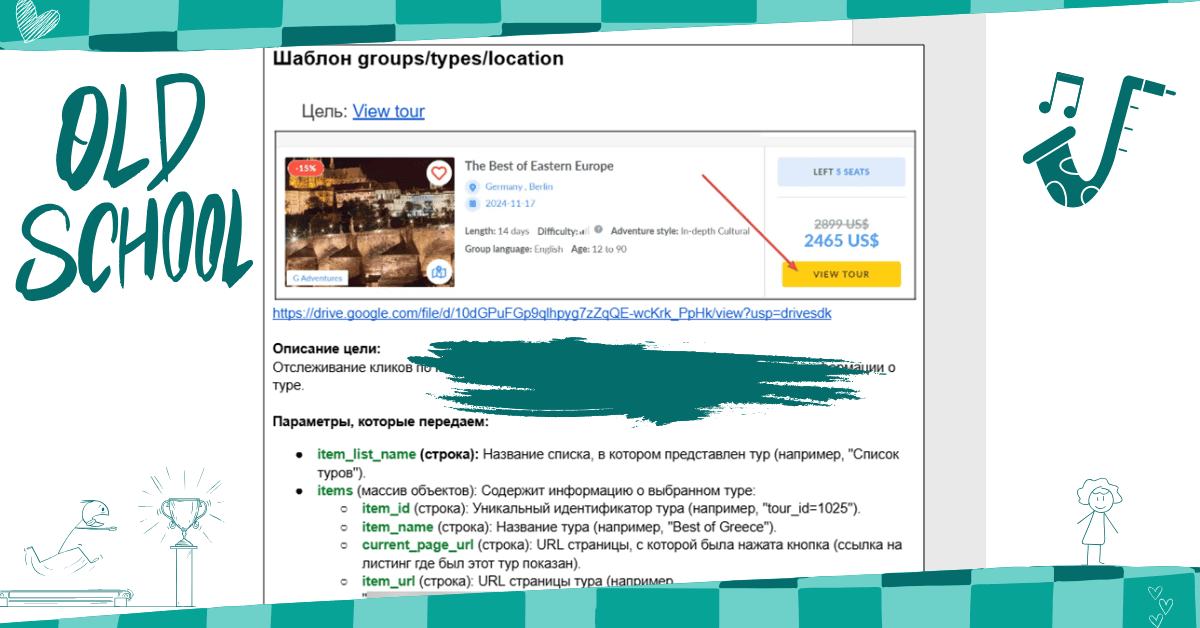

For each of these items, a separate technical task was drawn up for the programmer, which allowed us to correctly implement these elements and then debug them in GTM. A list of page types was compiled with a list of all the elements that need to be tracked.
Elife Travel is still preparing for its grand launch into the search engine index.
This shows that ElifeTravel is not waiting for the launch to become a leader. It is already laying the groundwork for future leadership. It’s not just SEO, it’s a growth strategy built into the project’s DNA.
The story of ElifeTravel shows a fundamental truth: successful promotion begins long before a website goes live on the Internet – when its digital bricks are laid, its logic is built, and a content strategy is created.
Thanks to the well-coordinated work and the client’s trust, ElifeTravel received a scalable, technically advanced, and internationally ready website before it even appeared in the index. This gave it an unrivaled starting position in the global tourism arena.
The ElifeTravel project is ongoing, and we expect its official launch in August 2025 to see the foundation we have laid turn into brilliant positions in the top of search results.